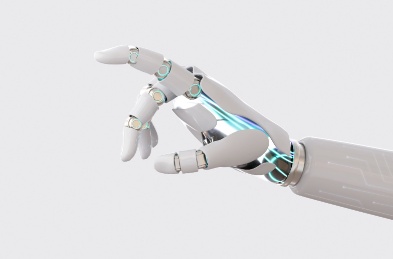Artificial intelligence is present in our lives practically at every step. We are still observing its dynamic development. Not surprisingly, the available possibilities will change, but so will users' needs. According to IDC research, worldwide government and business spending on AI technology will exceed $500 billion in 2023. [1]What will organizations use the money for?
In today's article, we present artificial intelligence predictions for the upcoming 2023. If you want to be a part of this tremendous AI revolution, start with AI consulting services.
Top 5 AI future predictions
What can we expect in the coming year? What are the AI predictions for 2023? Let's check out the top 5 AI trends!
EDGE COMPUTING – AN ALTERNATIVE TO THE CLOUD?
Nowadays, companies rely on cloud computing services for their data storage. One of the traditional methods is centralized cloud data centers to meet these needs. However, a centralized data center can challenge us in the long run in terms of speed, stability, security, and adaptability. For this reason, you may need to consider edge processing as an alternative. Edge computing is a trend in cloud storage that improves the way we access and process data online. What industries can benefit from edge computing? These are primarily companies dealing with high-frequency transactions, i.e., banks, social media, or online gaming operators.
This solution allows users to process data locally and immediately and also relieves servers from heavy loads. Apple, NVIDIA, and Google are big corporations that invest in edge computing technology.
AUGMENTED INTELLIGENCE
The next trend is augmented intelligence. Augmented intelligence is an alternative conceptualization of artificial intelligence. This technology focuses on the assistive role of AI. Its main premise is to increase human intelligence, not to replace it. In simple terms, augmented intelligence has the same background and uses the same tools as AI. However, it is used to collaborate with people, not replace them. So it's a combination of human intelligence and machines to increase productivity.
Augmented intelligence is perfect for analyzing huge amounts of changing data. An example is the analysis of medical data. Augmented intelligence allows you to quickly analyze the patient's symptoms and compare them with their previous history of diseases or ailments detected in their family members or millions of other patients in the database.
GENERATIVE AI
Generative AI offers organizations many new opportunities in terms of content creation. With generative AI, they can quickly generate images, videos, and written content. How is that possible? Generative AI algorithms use existing data and create completely new content. Generative AI can have applications in the media industry for:
- Restoring old movies in high definition
- Creating new videos
- Building avatars in the metaverse
- Creating extended special effects
GPT-3 is one of the most popular AI models. This model was developed by OpenAI, which can create text identical to that created by a human. There is also another variant of GPT-3 (DALL-E), which is used for creating images.
DEMOCRATIZATION OF ARTIFICIAL INTELLIGENCE, I.E., UNIVERSALITY
The democratization of artificial intelligence means the desire to make AI available to more people. So that its gains are not used only by highly specialized experts. The idea is to make this technology available to all companies. Every day, more and more apps offer AI functionality to everyone, no matter their technical skill level. And if there is no app that solves your problem, you can easily create your own. In 2023 it will be much easier. No coding knowledge is required as the number of low-code or no-code platforms are constantly growing.
The democratization of AI makes it easier to process big data for people who don't have technical skills but want to use it to achieve better results and make everyday life easier. One way is to use data virtualization software that takes data and processes it without knowing its technical aspects.
SUSTAINABLE ARTIFICIAL INTELLIGENCE
By 2025, without practices related to the so-called sustainable AI, artificial intelligence will consume more energy than human labor. As AI becomes more ubiquitous and requires more complex machine learning models, it consumes more data and computing resources and, consequently, more electricity. If current AI practices remain unchanged, the energy needed for AI alone could account for up to 3.5% of global electricity consumption by 2030.[2]
A rescue against this scenario may be the use of so-called sustainable Artificial Intelligence practices (specialized hardware to reduce energy consumption, energy-efficient coding, etc.). Thus, in 2023, companies will want to minimize their environmental impact.
Conclusion
AI has great potential in the development of many areas of our current knowledge. It is a technology that is developing even more every year. In the coming year, we will see the growing importance of artificial intelligence.


Comments (2)